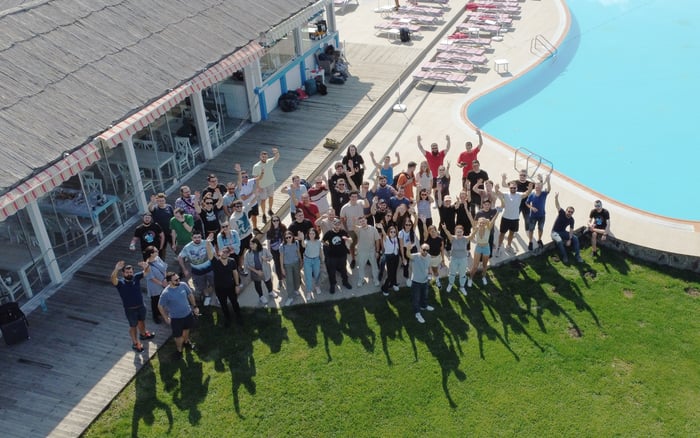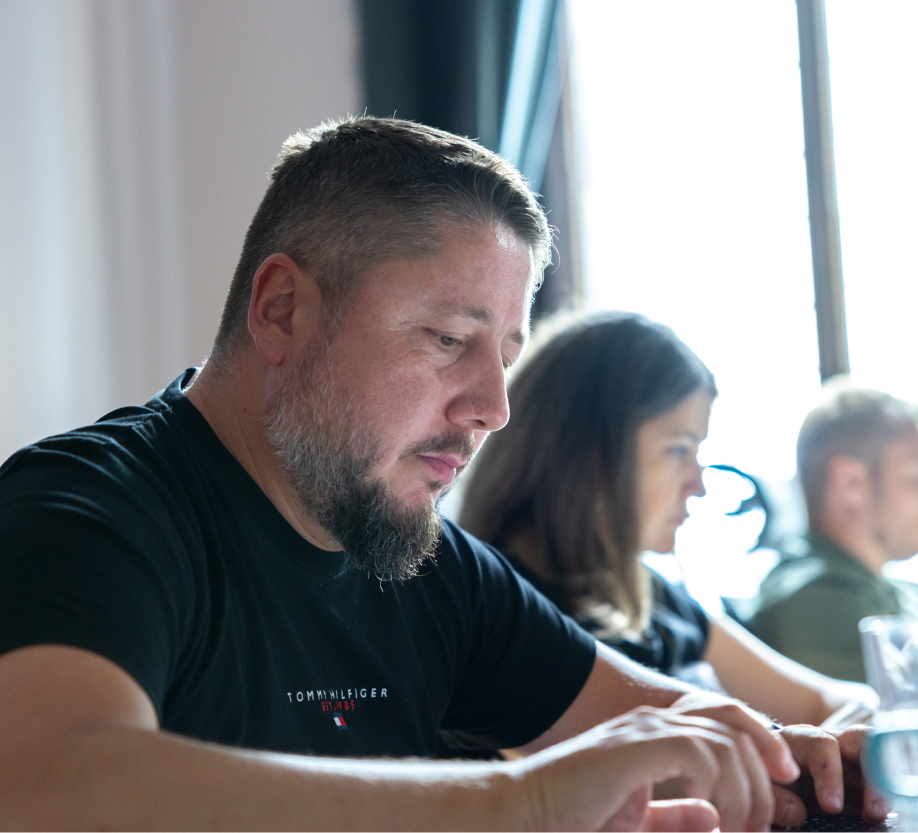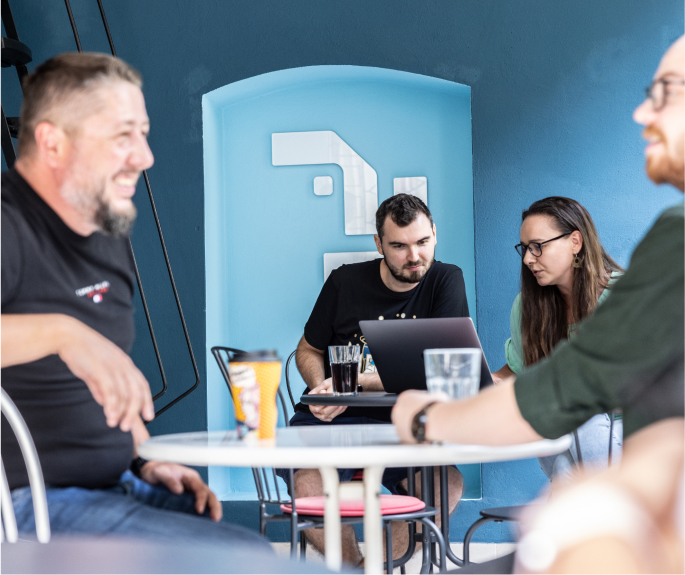Welcome to Thinslices!
Our resumé, manifesto, vision, and guide to life at Thinslices.
A set of guidelines about "people things" in Thinslices.

We're glad you're here.
This handbook is the document that covers all "people things" in Thinslices. It’s rooted in reality but also aspirational.
You'll find this document to be a set of guidelines for life and work at Thinslices, for employees and people who are interested in joining our team. It is rich in context and principles and light in formulas and prescriptions. You'll soon discover that we like autonomy and we treat people as adults. We like clarity, but we don't confuse the clarity with a set of detailed instructions.
If you have some questions you can't find written answers to, don't worry. We trust you to figure some things out on your own, and if you don't, just ask.
If you’re just joining our team, try out these guidelines. Do your best. Use your judgment. Make your own mistakes. Don't wait to be told. The team is here to support you, but don't wait to be pushed.
Our mission

Our values
Our core values are the guiding principles steering our decisions and actions. They embody our collaborative efforts in delivering value to our customers. These values transcend job titles or duties, influencing our communication style, collaborative efforts, and work approach.
We understand not all of them will appeal to you equally, but to some degree, you should be comfortable with all of them, or you're likely to have a tough time being successful here. They are our norms of behavior. This is how we treat each other, our clients, and our partners.
Engineering mindset
- Find the root cause (ask the 5 whys)
- Plan before you act
- Solve like an engineer
Diligence
- Take commitment seriously
- Be hard working
- Go the extra mile
Openness
- Sweep nothing under the rug
- Empower by sharing information
- Be receptive to feedback and new ideas
Entrepreneurial attitude
- Change is the only constant. Embrace it!
- Every pain is an opportunity
- Be part of the solution
Team player
- Care for your team mate
- Lend a hand
- Win together (lose together)
Behaviors we reward
Behaviors we won’t tolerate
Our structure

Dedicated Teams
Delivery Management Team
Leadership Team
Sales & Marketing Team
Finance & Admin Team
People Team
Instead of organizing team members into departments depending on their job titles, we strive to create high-performance teams based on a unique combination of people attributes reflected in the behaviors we described earlier and the Agile mindset, as follows:
Agile Mindset
Our standards

Looking ahead, we see a future where our commitment to these practices makes us even better at creating and delivering value. We aim for a future where our clients see and experience the continuous value we create, building a lasting trust and a reputation for innovation and excellence. In this way, we're not just solving problems but creating lasting value, one project at a time.
TSDD
Understanding through Testing:
- Write one, multiple, or all test cases that detail the desired functionalities and outcomes.
- These tests act as initial blueprints, establishing clear expectations for the software's behavior.
Implementation through Coding:
- Produce the necessary production code to satisfy the predefined tests. This phase is not about just passing the tests but understanding the underlying needs and crafting solutions that not only meet but exceed expectations.
- Flexibility is our strength. Depending on the project's nature and complexity, developers can choose to write code for a single test, multiple tests, or all tests. The emphasis is on creating software that resonates with client needs and delivers exceptional value.
We kickstart the journey by refining your concepts, turning your ideas into concrete blueprints that set the stage for success.
Reflection through Refactoring:
- With tests as a foundation, we have the freedom to refactor and optimize our code. Refactoring is not just about improving code structure but re-evaluating the solution's essence to ensure its alignment with the client's vision and goals.
In our version of TDD, the tools, frameworks, or specific methodologies we use are secondary to our overarching commitment: crafting software solutions that stand the test of time, deliver remarkable value, and resonate with the ever-evolving needs of our clientele. We aim for TSDD to be the golden thread that ties together our technical expertise, client expectations, and Thinslices' vision, making us the go-to destination for high-quality software services.

Decision making
Proposals
Decision Making
Implementation
Learning through Decisions

The success of our projects hinges on the active involvement of every team member. By making proposals, deciding on the best course of action, implementing decisions, and learning from the outcomes, we have the power to turn our aspirations into reality.
Skill Development
Working at Thinslices
I love it when I get to have a "no-bullshit" talk: where I get the info I need, I know where we stand and what we have to do, without the unrealistic fluff.
Transparency and not doing something because a lot of other companies are doing it, but because it makes sense for Thinslices. Also, it's a Romanian company which is expanding internationally. I think this is a reason to be proud.
For me, Thinslices is a company that offers the chance to work even to people without experience in the field; that helps you grow and evolve, that appreciates its employees. It is the company with the healthiest thinking, with a constructive attitude.
I feel I belong when I'm asking something uncomfortable.
Autonomy, being able to be myself, having the space to develop and express my own ideas.
Feedback and Feedforward
Feedback & feedforward are our main mechanisms to grow together in Thinslices and to deliver value to our clients. There will never be a better way of improving as an individual or as a team than being radically candid about what we did well, what we did less than well, the outcomes that our actions led to, and what other actions and behaviors we need to cultivate moving forward.
Feedback is information about past performance, while feedforward is information about future performance. Both feedback and feedforward are important for improvement, but they have different purposes.
Feedback
Feedforward
Measuring Performance

Rewarding value
A CV-EV discussion is not about presenting numbers or skills, it’s about showing the evolution of your monthly performance reviews and the value you delivered during that time. You share how the skills acquired were not just for you, but to foster a culture of excellence, to create a ripple effect of value creation that aligns seamlessly with the Thinslices philosophy.
The system is designed to bring together the Monthly Performance Review, Skill Development practice, and CV-EV events to show your growth journey at Thinslices.

Our Benefits
We strive to create a working environment where you find like-minded individuals with whom you enjoy working and growing together.
That being said, we love to get together for different types of events - our internal book club, a yearly Teambuilding and Christmas party, random parties, mountain hikes and more. The official list of perks also includes:
Using this information